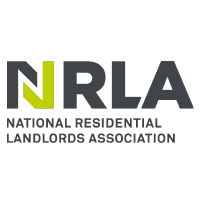
Finding the perfect apartment in London can be both exciting and daunting. With its vast array of neighbourhoods, varying price ranges, and unique properties, the capital offers something for everyone—whether you’re a young professional, a student, or a family. However, navigating this expansive market requires careful consideration and strategic planning. In this comprehensive guide, we’ll explore the key factors to consider when searching for an apartment in London, provide tips on how to make your search more efficient, and highlight how to use home search sites effectively. Whether you’re looking for a property for rent in London or planning to make a more permanent move, this guide will help you find the best apartment for your needs.
1. Understanding the London Property Market
The Diversity of London’s Neighbourhoods
London is a city of villages, each with its own distinct character, culture, and amenities. When searching for an apartment, it’s essential to understand the personality of different areas to find the one that best suits your lifestyle.
- Central London: Areas like Westminster, Covent Garden, and the City of London are known for their proximity to major landmarks, high-end shopping, and vibrant nightlife. Apartments here tend to be more expensive, but they offer the convenience of being in the heart of the action.
- West London: Neighbourhoods such as Kensington, Chelsea, and Notting Hill are famous for their picturesque streets, excellent schools, and luxury properties. This area is ideal for those seeking a more upscale living environment.
- East London: Known for its artistic vibe, East London is home to areas like Shoreditch, Hackney, and Bethnal Green. It’s popular among young professionals and creatives due to its trendy cafes, galleries, and nightlife.
- North London: Areas like Camden, Islington, and Hampstead offer a mix of vibrant culture and green spaces. They are popular with families and professionals looking for a blend of urban living and tranquillity.
- South London: With neighbourhoods like Clapham, Greenwich, and Wimbledon, South London is often more affordable than the north and offers a variety of housing options, from modern apartments to Victorian terraces.
Understanding these neighbourhoods is crucial because where you live in London will significantly impact your lifestyle, commute, and overall satisfaction with your new home.
Market Trends and Pricing
London’s property market is one of the most dynamic and competitive in the world. Prices vary significantly depending on the area, property type, and even the time of year. On average, rental prices in Central London are higher due to demand and proximity to key business districts and attractions. However, if you’re willing to commute, you can find more affordable options in outer zones.
It’s also important to be aware of market trends. For instance, during peak seasons like summer, when many people move to the city, prices may rise due to increased demand. Conversely, there may be more negotiation room during off-peak seasons like winter.
2. Key Factors to Consider When Renting an Apartment in London
Budget and Affordability
Before you begin your search, it’s essential to establish a clear budget. London is notorious for its high living costs, and rent will likely be your most significant expense. A general rule of thumb is that your rent should not exceed 30% of your monthly income. This ensures that you have enough left over for other living costs, such as utilities, transport, and groceries.
When setting your budget, remember to factor in additional costs such as council tax, which varies depending on the borough and property size, as well as utility bills and internet. Some properties may also require a security deposit, usually equivalent to four to six weeks of rent, and possibly other fees, although these have been reduced by recent legislation.
Location and Commute
London is a sprawling city, and where you choose to live will significantly impact your daily commute. The city’s public transport system is extensive, with the Underground (Tube), buses, and trains connecting virtually every part of the city. When searching for an apartment, consider how close you want to be to your workplace, schools, or other important locations.
For instance, if you work in the City of London but prefer a quieter neighbourhood, you might look at areas in North or South London that have direct transport links. Conversely, if you enjoy being in the heart of the city, Central or East London might be more appealing, even if it means paying a premium for rent.
Property Type and Size
London offers a diverse range of property types, from modern apartments in high-rise buildings to charming flats in converted Victorian houses. The type of property you choose will depend on your needs, preferences, and budget.
- Studios and One-Bedroom Flats: Ideal for singles or couples, these properties are common in Central London and are often located in modern developments with additional amenities like gyms or concierge services.
- Two- and Three-Bedroom Flats: Suitable for small families or those needing extra space for a home office, these are typically found in more residential areas, offering more space and often better value for money.
- Shared Accommodation: For those on a tighter budget, sharing a flat or house can be a cost-effective option. This is particularly popular among students and young professionals.
When considering property size, think about your current and future needs. For example, if you’re planning to work from home, ensure the apartment has enough space for a comfortable home office.
Amenities and Features
Different properties offer different amenities, and it’s essential to prioritise what matters most to you. Some of the key features to consider include:
- Furnished vs Unfurnished: Many rental properties in London come fully or partially furnished, which can save you money on buying furniture. However, if you already have your furniture or prefer to personalise your space, an unfurnished apartment might be better.
- Modern Conveniences: Look for properties with modern appliances, efficient heating systems, and good insulation. These factors will not only make your living experience more comfortable but can also help reduce utility bills.
- Building Amenities: Some modern apartment complexes offer additional amenities such as gyms, communal gardens, or concierge services. While these can enhance your living experience, they may also come with higher rental costs.
- Outdoor Space: In a city as densely populated as London, having access to outdoor space can be a significant advantage. Consider whether you need a balcony, garden, or proximity to parks.
3. The Role of Home Search Sites
How Home Search Sites Have Transformed Property Hunting
In the digital age, home search sites have revolutionised the way people find properties for rent in London. These platforms offer a wealth of information at your fingertips, making the process of finding an apartment faster, easier, and more transparent. Whether you’re looking for a luxury apartment in Kensington or a budget-friendly flatshare in Shoreditch, home search sites can help you find the perfect property.
Key Features of Home Search Sites
Home search sites offer various features that can streamline your search:
- Advanced Search Filters: You can filter properties by location, price, number of bedrooms, and other criteria. This allows you to quickly narrow down your options to those that meet your specific needs.
- Virtual Tours: Many listings now include virtual tours or 360-degree photos, allowing you to get a realistic sense of the property without having to visit in person. This can be particularly useful if you’re relocating from another city or country.
- Detailed Listings: Each property listing typically includes detailed descriptions, high-quality photos, floor plans, and information about the local area. This helps you make informed decisions about whether a property is worth viewing in person.
- Saved Searches and Alerts: Most home search sites allow you to save your searches and set up alerts for new listings that match your criteria. This ensures that you don’t miss out on any potential properties.
- Comparative Tools: Some sites offer tools that allow you to compare properties side by side, considering factors like rent, location, and amenities. This can help you weigh your options more effectively.
Popular Home Search Sites in London
Several home search sites are particularly popular among those looking for properties in London. Some of the most widely used include:
- Rightmove: One of the largest property portals in the UK, Rightmove offers a vast selection of rental properties across London. It’s known for its comprehensive listings and user-friendly interface.
- Zoopla: Another leading property site, Zoopla provides detailed market data, including historical price trends and area insights. It’s a great resource for those looking to understand the market before making a decision.
- OnTheMarket: This site is known for its “new and exclusive” listings, which appear 24 hours before they are listed on other major portals. It’s an excellent option for those looking to get a head start on new properties.
- OpenRent: Particularly popular with those looking for more affordable options, OpenRent connects renters directly with landlords, often bypassing traditional letting agents. This can lead to lower fees and a more direct rental process.
4. Viewing and Securing Your Apartment
Preparing for Viewings
Once you’ve identified a few potential apartments using home search sites, the next step is to arrange viewings. It’s important to be well-prepared for these viewings to ensure you make the most of your time.
- Bring a Checklist: Create a checklist of your must-have features and any questions you have about the property. This might include questions about the tenancy agreement, the property’s energy efficiency, or the local amenities.
- Take Photos and Notes: During the viewing, take photos and notes to help you remember each property. This is particularly useful if you’re viewing multiple apartments in a short period.
- Check for Potential Issues: Look out for any signs of wear and tear, such as damp, mould, or faulty appliances. Don’t hesitate to ask the landlord or agent about any concerns you have.
Making an Offer
If you find an apartment that meets your needs, you’ll need to act quickly, especially in London’s competitive market. Here are some tips for making an offer:
- Be Ready to Commit: Landlords often prefer tenants who can move in quickly, so having your references, deposit, and initial rent ready can give you an edge.
- Negotiate If Appropriate: While the London rental market is competitive, there may still be room for negotiation, particularly if you’re willing to sign a longer lease or pay a few months’ rent upfront.
- Understand the Tenancy Agreement: Before signing anything, ensure you understand the terms of the tenancy agreement, including the length of the lease, the notice period, and any conditions related to the property.
5. Moving In and Settling Down
Final Checks Before Moving In
Before you move in, conduct a final walkthrough of the apartment to ensure everything is in order. Check that all appliances are working, the property is clean, and any agreed-upon repairs have been completed.
Setting Up Utilities and Services
Once you’ve moved in, you’ll need to set up utilities like electricity, gas, water, and internet. Some rental properties include certain utilities in the rent, so check your tenancy agreement to see what you’re responsible for.
Exploring Your New Neighbourhood
Finally, take some time to explore your new neighbourhood. Whether it’s finding the nearest grocery store, exploring local parks, or discovering nearby cafes and restaurants, getting to know your area will help you feel at home more quickly.
Conclusion
Finding the best apartment in London requires a careful balance of budget, location, and property type, along with a strategic use of home search sites. By understanding the market, being clear about your priorities, and using the tools available to you, you can navigate the London rental market with confidence.
Whether you’re seeking a luxury apartment in Kensington, a trendy flat in Shoreditch, or a family-friendly home in Richmond, London has something to offer everyone. With the right approach, you can find a property for rent in London that perfectly matches your needs, allowing you to enjoy all that this vibrant city has to offer.


